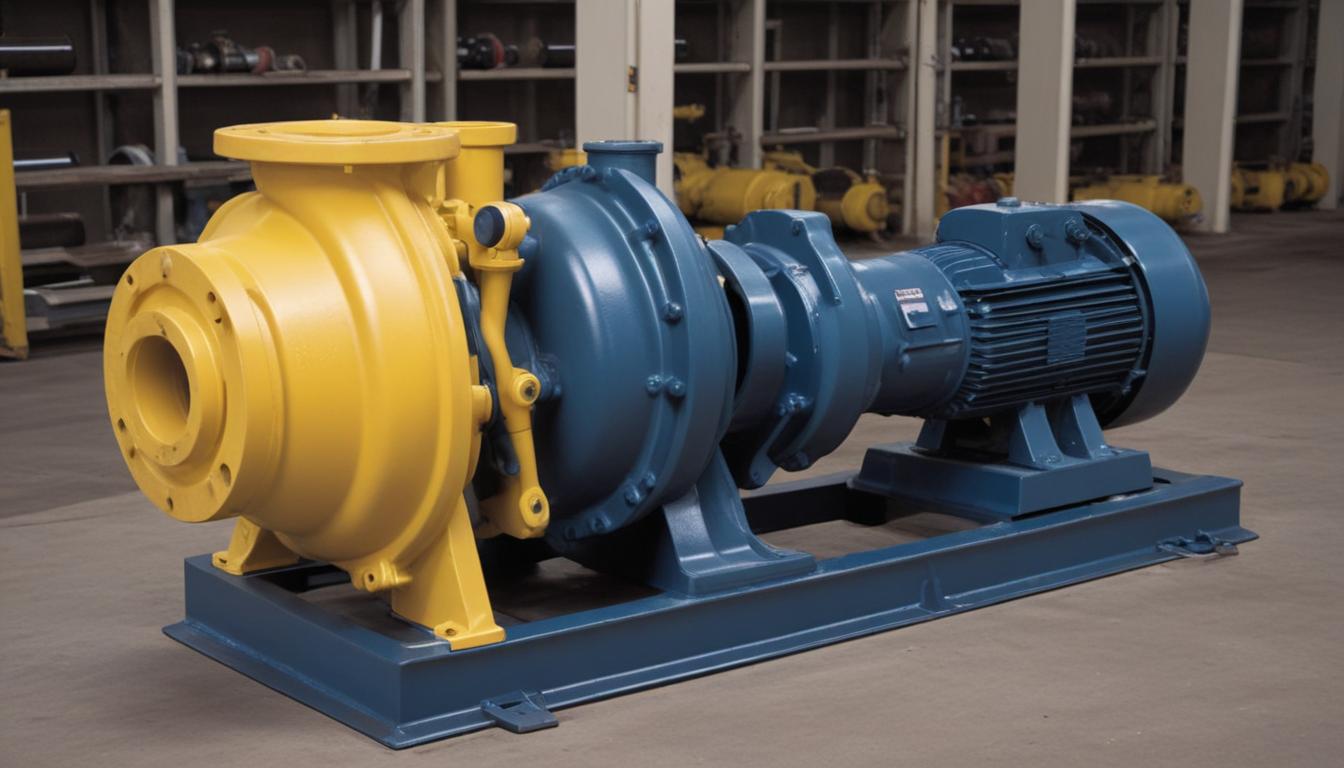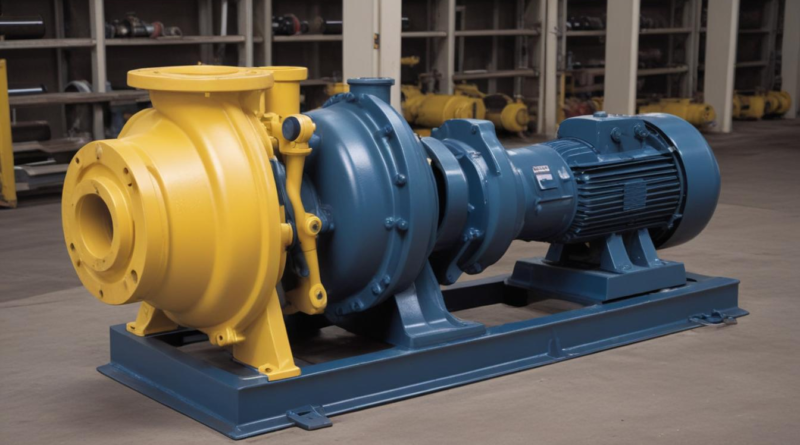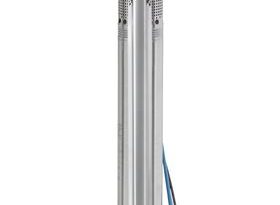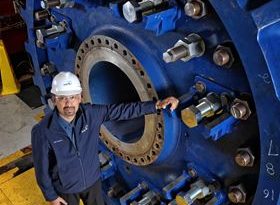how to choose a pump based on reliability
Pump reliability is a critical factor in ensuring the consistent and efficient operation of any system that relies on fluid movement. Reliable pumps minimize downtime, reduce maintenance costs, and enhance overall system performance. Understanding the elements that contribute to pump reliability is essential for making informed selection decisions.
Several key factors influence the reliability of a pump:
- Design and Construction: The inherent design of the pump, including the quality of materials used and the precision of manufacturing processes, plays a significant role in its reliability. Pumps designed with robust materials such as stainless steel or cast iron tend to withstand harsh operating environments better.
- Quality of Components: High-quality bearings, seals, and impellers reduce the likelihood of mechanical failures. Superior components ensure smoother operation and extend the pump’s lifespan.
- Operating Conditions: Factors such as temperature, pressure, and the nature of the fluid being pumped (e.g., corrosive, abrasive) directly impact pump durability. Selecting a pump that can handle the specific conditions of your application is vital.
- Installation and Alignment: Proper installation and alignment prevent undue stress on the pump and its components, thereby enhancing reliability. Misalignment can lead to premature wear and malfunction.
- Maintenance Practices: Regular maintenance, including lubrication, inspection, and timely replacement of worn parts, ensures that the pump operates reliably over time.
To systematically evaluate pump reliability, consider the following criteria:
| Criterion | Description |
|---|---|
| Mean Time Between Failures (MTBF) | Indicates the average time a pump operates before a failure occurs. A higher MTBF signifies greater reliability. |
| Material Quality | Assesses the durability and suitability of materials used in pump construction for the intended application. |
| Component Quality | Evaluates the reliability of individual components such as bearings, motors, and seals. |
| Operational Flexibility | Measures the pump’s ability to handle varying flow rates and pressures without compromising performance. |
| Serviceability | Refers to how easily maintenance can be performed, including part replacements and routine inspections. |
By meticulously analyzing these factors and criteria, stakeholders can enhance their understanding of pump reliability and make informed decisions that ensure the longevity and effectiveness of their pumping systems.
evaluating performance specifications
When selecting a pump, thoroughly evaluating its performance specifications is essential to ensure it meets the operational demands and maintains high reliability over time. Critical performance metrics provide insight into how well a pump will perform under specific conditions and help in comparing different models to find the best fit for your application.
Key Performance Specifications to Consider:
- Flow Rate: This refers to the volume of fluid a pump can move within a given time period, typically measured in gallons per minute (GPM) or liters per second (L/s). Selecting a pump with an appropriate flow rate is crucial to match the system’s requirements and avoid overloading the pump.
- Head: Head indicates the height to which a pump can raise the fluid, measured in feet or meters. It’s essential to match the pump’s head capacity with the vertical distance and the system’s pressure needs to ensure efficient operation.
- Net Positive Suction Head (NPSH): NPSH is a measure of the pressure available at the pump inlet to prevent cavitation, which can severely impact pump reliability. Adequate NPSH ensures smooth and continuous pump operation without damage.
- Power Requirements: Understanding the electrical power needed, such as voltage and horsepower, ensures compatibility with existing power sources and helps in calculating operational costs.
- Efficiency: Pump efficiency affects both performance and energy consumption. Higher efficiency pumps reduce energy costs and minimize wear and tear, contributing to longer pump life.
- Operating Temperature: The temperature range within which the pump can operate effectively is vital, especially in applications involving extreme temperatures. Ensuring the pump can handle the desired temperature range is important for reliability.
Performance Curves:
Performance curves are graphical representations that show the relationship between different performance specifications such as flow rate, head, and efficiency. These curves are invaluable tools for predicting pump behavior under various operating conditions and facilitating the selection process.
| Performance Curve Type | Description |
|---|---|
| Flow vs. Head | Displays how the head changes with varying flow rates, helping to determine the operating point that matches system requirements. |
| Efficiency Curve | Shows the pump’s efficiency across different flow rates, aiding in selecting a pump that operates efficiently under expected conditions. |
| NPSH Available Curve | Illustrates the available NPSH at different flow rates, ensuring that the selected pump operates without cavitation. |
| Power Consumption Curve | Indicates the power required at various flow rates, assisting in energy cost calculations and ensuring power supply compatibility. |
Selection Criteria Based on Performance Specifications:
- Match Pump Performance to System Requirements: Ensure that the pump’s flow rate and head align with the system’s demands. Over-sizing or under-sizing can lead to inefficiencies and reduce pump reliability.
- Evaluate Operating Conditions: Consider factors such as fluid properties, temperature, and pressure to select a pump that can handle the specific conditions without compromising performance.
- Analyze Efficiency: Choose pumps with high efficiency ratings to minimize energy consumption and extend the pump’s operational lifespan.
- Assess NPSH Requirements: Verify that the pump’s NPSH available exceeds the required NPSH to prevent cavitation and ensure smooth operation.
- Consider Power Compatibility: Ensure that the pump’s power requirements are compatible with the available power supply and that the system can handle the electrical load.
By carefully evaluating these performance specifications, you can select a pump that not only meets the immediate operational needs but also maintains high reliability and efficiency over its service life. This strategic approach to pump selection helps in minimizing downtime, reducing maintenance costs, and ensuring the long-term success of your fluid handling systems.
assessing maintenance requirements
Effective maintenance practices are integral to ensuring long-term pump reliability and minimizing operational disruptions. When assessing maintenance requirements, it is essential to consider how easily a pump can be maintained, the frequency of required maintenance tasks, and the availability of replacement parts. These factors significantly influence the overall selection criteria for a reliable pumping system.
Types of Maintenance Strategies:
- Preventive Maintenance: Scheduled maintenance activities, such as regular inspections, lubrication, and part replacements, are performed to prevent unexpected failures. This approach enhances reliability by addressing potential issues before they escalate.
- Predictive Maintenance: Utilizes condition-monitoring tools and techniques to predict when maintenance should be performed. By analyzing data from sensors and diagnostic tools, maintenance can be scheduled based on the actual condition of the pump, optimizing maintenance efforts and resources.
- Corrective Maintenance: Involves repairing or replacing components after a failure has occurred. While this approach can lead to longer downtimes and higher costs, it is sometimes necessary for addressing unforeseen issues.
Key Maintenance Requirements to Consider:
- Ease of Access: Pumps should be designed for easy access to critical components, facilitating routine inspections and maintenance tasks. Features such as removable covers and accessible bearings can simplify maintenance procedures.
- Availability of Spare Parts: Ensuring that replacement parts are readily available reduces downtime during repairs. Selecting pumps from manufacturers with robust spare parts inventories and reliable distribution networks is crucial.
- Maintenance Intervals: Understanding the recommended maintenance frequency helps in planning and resource allocation. Pumps requiring less frequent maintenance can lead to reduced labor costs and fewer operational interruptions.
- Documentation and Support: Comprehensive maintenance manuals and access to technical support ensure that maintenance tasks are performed correctly and efficiently. Detailed documentation aids in troubleshooting and training maintenance personnel.
- Tool Requirements: Identifying the specialized tools needed for maintenance tasks ensures that maintenance teams are adequately equipped, thereby streamlining the maintenance process.
Maintenance Assessment Criteria:
| Criterion | Description |
|---|---|
| Maintenance Frequency | Determines how often maintenance tasks need to be performed to maintain pump reliability. Lower frequencies can indicate easier maintenance requirements. |
| Ease of Maintenance | Evaluates how straightforward maintenance tasks are, including the accessibility of components and the simplicity of disassembly and reassembly processes. |
| Availability of Parts | Assesses the ease of obtaining replacement parts, including lead times and the geographic distribution of suppliers. |
| Cost of Maintenance | Considers the financial implications of performing maintenance, including labor costs, parts expenses, and the need for specialized tools or equipment. |
| Technical Support and Documentation | Measures the quality and accessibility of maintenance manuals, technical support services, and training resources provided by the manufacturer. |
Selection Criteria Based on Maintenance Requirements:
- Evaluate Maintenance Accessibility: Choose pumps that allow easy access to key components, reducing the time and effort required for maintenance tasks.
- Assess Spare Parts Availability: Ensure that spare parts are readily available and that the manufacturer has a reliable supply chain to support timely replacements.
- Determine Maintenance Intervals: Select pumps with maintenance schedules that align with your operational capabilities and minimize disruption.
- Review Documentation and Support: Prefer manufacturers that provide comprehensive maintenance manuals and robust technical support to assist with troubleshooting and repairs.
- Calculate Total Maintenance Costs: Consider not only the initial purchase price but also the long-term maintenance expenses to ensure the pump is cost-effective over its lifespan.
Integrating these maintenance considerations into your pump selection process ensures that the chosen pump not only meets performance and reliability standards but also aligns with your operational maintenance capabilities. By prioritizing maintenance-friendly designs and robust support systems, you can enhance the longevity and dependability of your pumping solutions, ultimately contributing to the seamless operation of your fluid handling systems.
considering energy efficiency
 Energy efficiency plays a pivotal role in the overall reliability and cost-effectiveness of pump systems. By focusing on energy-efficient pumps, organizations can significantly reduce operational costs, minimize environmental impact, and enhance the long-term sustainability of their fluid handling operations. Understanding the factors that influence energy efficiency and incorporating them into the pump selection criteria ensures that the chosen pump not only meets performance requirements but also operates optimally under varying conditions.
Energy efficiency plays a pivotal role in the overall reliability and cost-effectiveness of pump systems. By focusing on energy-efficient pumps, organizations can significantly reduce operational costs, minimize environmental impact, and enhance the long-term sustainability of their fluid handling operations. Understanding the factors that influence energy efficiency and incorporating them into the pump selection criteria ensures that the chosen pump not only meets performance requirements but also operates optimally under varying conditions.
Key Factors Influencing Energy Efficiency:
- Pump Design: Advanced pump designs, such as those with optimized impeller geometry and streamlined casing, reduce energy losses and improve hydraulic performance. Axial and centrifugal pump designs each offer unique advantages in different applications, impacting overall efficiency.
- Motor Efficiency: Selecting high-efficiency motors, often rated with premium efficiency standards, can significantly lower energy consumption. Motors with variable frequency drives (VFDs) further enhance efficiency by adjusting motor speed to match system demand.
- System Integration: Properly integrating the pump within the system, including matching pump characteristics with system curves, ensures minimal energy wastage. Avoiding issues like excessive pressure drops and cavitation contributes to sustained energy efficiency.
- Operational Practices: Implementing best practices such as regular maintenance, monitoring performance metrics, and adjusting operations based on demand can maintain high energy efficiency levels over the pump’s lifespan.
Measuring and Enhancing Energy Efficiency:
To effectively assess and improve the energy efficiency of a pump, it is essential to consider the following metrics and strategies:
| Metric/Strategy | Description |
|---|---|
| Efficiency Rating | Indicators such as pump efficiency curves and motor efficiency ratings provide insights into how effectively the pump converts electrical power into hydraulic energy. |
| Specific Energy Consumption (SEC) | Measures the energy used per unit of fluid moved, helping to compare the energy performance of different pumps under similar operating conditions. |
| Variable Frequency Drives (VFDs) | VFDs allow for dynamic control of pump speed, aligning energy usage with demand and reducing unnecessary energy consumption during low-flow periods. |
| System Optimization | Adjusting system parameters such as pipe sizing, reducing friction losses, and eliminating unnecessary bends can enhance overall system efficiency. |
| Regular Maintenance | Ensuring that pumps are well-maintained, with clean impellers and properly lubricated bearings, reduces energy losses caused by wear and tear. |
Energy Efficiency Selection Criteria:
When incorporating energy efficiency into the pump selection process, consider the following criteria to ensure optimal performance and cost savings:
- Evaluate Efficiency Ratings: Compare the efficiency ratings of different pumps to identify models that offer the highest energy conversion rates for your specific application.
- Consider Total Cost of Ownership (TCO): Assess not only the initial purchase price but also the long-term energy costs and potential savings associated with more efficient pump models.
- Incorporate VFDs: Determine if integrating variable frequency drives into your pump system can provide additional energy savings and operational flexibility.
- Analyze System Compatibility: Ensure that the selected pump design aligns with your existing system configuration to maximize energy efficiency and maintain pump reliability.
- Assess Maintenance Requirements: Choose pumps that are easy to maintain and have components designed to sustain high efficiency levels over time, minimizing energy losses due to maintenance issues.
By prioritizing energy efficiency in the pump selection process, organizations can achieve significant reductions in energy consumption and operational costs while maintaining high levels of pump reliability. Implementing energy-efficient practices and technologies not only contributes to the economic viability of pumping systems but also supports environmental sustainability initiatives, making it a critical component of modern pump selection criteria.
selecting trusted manufacturers
Selecting a reputable manufacturer is paramount in ensuring the long-term reliability and performance of your pump system. Established manufacturers typically adhere to strict quality standards, invest in research and development, and provide comprehensive support services, all of which contribute to the overall dependability of their products. When evaluating potential manufacturers, consider the following factors to guide your decision-making process.
Key Factors to Consider When Selecting Manufacturers:
- Reputation and Track Record: Investigate the manufacturer’s history in the industry, including their years of experience, customer testimonials, and case studies. A solid track record indicates consistent performance and reliability.
- Quality Certifications: Look for manufacturers that hold relevant certifications such as ISO 9001, which demonstrates their commitment to quality management systems and continuous improvement.
- Product Range and Innovation: A diverse product portfolio and a focus on innovation suggest that the manufacturer can cater to various applications and adapt to evolving industry standards.
- After-Sales Support and Service: Assess the availability and quality of after-sales services, including technical support, training, and maintenance services. Reliable support can significantly enhance pump reliability over its lifespan.
- Warranty and Guarantee: Comprehensive warranty terms reflect the manufacturer’s confidence in their products. Review the warranty details to understand the coverage and the processes for handling claims.
- Availability of Spare Parts: Ensure that the manufacturer maintains a robust inventory of spare parts and has an efficient distribution network to minimize downtime during repairs.
- Customization Capabilities: The ability to customize pumps to meet specific application requirements can be a crucial advantage, ensuring that the pump selection criteria align perfectly with your operational needs.
- Customer Service and Responsiveness: Evaluate the manufacturer’s responsiveness to inquiries and their willingness to provide tailored solutions. Excellent customer service can facilitate smoother interactions and quicker resolution of issues.
Manufacturer Evaluation Criteria:
| Criterion | Description |
|---|---|
| Industry Experience | Measures the number of years the manufacturer has been operating in the pump industry and their expertise in producing reliable pumps. |
| Quality Certifications | Assesses the presence of certifications like ISO 9001, which indicate adherence to quality management and manufacturing standards. |
| Product Innovation | Evaluates the manufacturer’s commitment to research and development, leading to advanced and efficient pump designs. |
| After-Sales Support | Looks at the availability and quality of technical support, maintenance services, and training provided by the manufacturer. |
| Warranty Terms | Reviews the scope and duration of warranties offered, reflecting the manufacturer’s confidence in their product reliability. |
| Spare Parts Availability | Considers the ease of obtaining replacement parts and the manufacturer’s ability to supply them promptly. |
| Customization Options | Assesses the ability to tailor pumps to specific application requirements, ensuring optimal performance and reliability. |
| Customer Feedback | Analyzes reviews, ratings, and testimonials from existing customers to gauge overall satisfaction and product performance. |
Selection Criteria Based on Manufacturer Evaluation:
- Verify Industry Credentials: Ensure that the manufacturer has the necessary certifications and a proven track record in the pump industry to guarantee product quality and reliability.
- Assess Support Services: Choose manufacturers that offer robust after-sales support, including technical assistance, training programs, and maintenance services, to sustain pump reliability over time.
- Review Warranty and Guarantees: Select manufacturers that provide comprehensive warranty terms, indicating their confidence in the durability and performance of their pumps.
- Evaluate Spare Parts Supply: Prioritize manufacturers with readily available spare parts and efficient distribution channels to minimize downtime in case of component failures.
- Consider Customization Needs: If your application requires specialized pump configurations, opt for manufacturers with the capability to customize products to meet your specific criteria.
- Analyze Customer Feedback: Research customer experiences and feedback to identify manufacturers known for reliable products and excellent customer service.
- Compare Product Innovation: Favor manufacturers that invest in innovation and offer advanced features, enhancing both pump reliability and system performance.
By meticulously evaluating these factors and applying the outlined criteria, you can select a manufacturer that not only provides high-quality pumps but also supports your operational needs through reliable service and innovative solutions. This strategic approach to manufacturer selection is essential for ensuring the enduring reliability and efficiency of your pumping systems.




